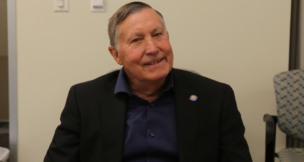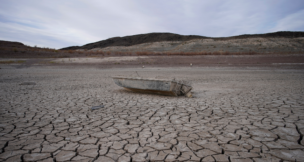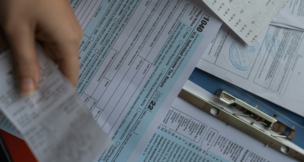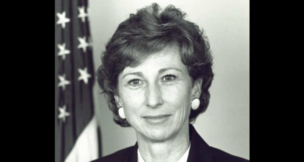Commerce Report Describes State As ‘Too Dependent’ On Out-Of-State Gas Suppliers
Arizona Capitol Reports Staff//August 29, 2003//[read_meter]
Commerce Report Describes State As ‘Too Dependent’ On Out-Of-State Gas Suppliers
Arizona Capitol Reports Staff//August 29, 2003//[read_meter]
Three months before Phoenix’s gasoline supply was interrupted by a broken pipeline, the state Department of Commerce warned in a report of “chaos” and “mayhem” if the city’s fuel supplies were shut down entirely.
The warning was so colorful that a group of investors who want to build an oil refinery in the desert southwest of the city have it posted on their Web site.
It does not appear on the Commerce Web site, however, and Governor Napolitano, who was briefed by department energy advisers on potential gasoline problems shortly after she took office in January, says no one used words such as chaos and mayhem when they talked to her back then.
The PowerPoint presentation that warns of serious social consequences of a complete gasoline shutdown was prepared in May by Mark Ellery, a Commerce Department energy policy adviser.
“If the faucet is turned off…. One day = chaos. Three days = mayhem,” says the report, speaking of the Kinder Morgan pipelines that bring gasoline to Phoenix from El Paso and southern California.
Only a section of the pipeline from El Paso was shut down during the recent shortage, and “that has to be put into context,” said Jami McFerren, commerce communications director. “We never experienced a total shutdown.”
Near-normal gas service was restored to the Valley Aug. 23, when Kinder Morgan built a bypass around a faulty four-mile section of the pipeline north of Tucson. The pipeline ruptured July 30 and later was shut down, causing a shortage of gas in the Phoenix area, panic buying and higher prices.
The second and larger Kinder Morgan pipeline from refineries in southern California supplied increased amounts of gas to Phoenix during the shortage.
“We are very vulnerable to the oil industry,” Ms. Napolitano said at her Aug. 28 news briefing.
Now, there is “almost a surplus” of gas, the governor said, adding that no shortages were expected over the Labor Day holiday.
In addition to studying the state’s gasoline infrastructure, Ms. Napolitano said, the special task force she formed during the gas shortage also will take a look at a proposal to build an oil refinery near Phoenix, as well as study natural gas and water supplies and distribution.
‘Chaos’ And ‘Mayhem’
The Commerce presentation, which was first reported by Mike Sunnucks of The Business Journal, describes the Phoenix metropolitan area as “an island in the desert dependent upon out-of-state suppliers” — Texas and California refineries — and connected to them by “two skinny pipelines.”
Ms. McFerren said the Commerce presentation was not placed on Commerce’s Web site because it is only for briefing purposes. It was however, published at www.arizonacleanfuels.com, the Website for Arizona Clean Fuels, a Phoenix-based group of investors who want to build what they say would be “the most technologically advanced refinery in the history of the United States” in the desert 20 miles southwest of Phoenix at a cost of $2.5 billion.
A consultant and lobbyist for Arizona Clean Fuels says the group has met with several former Arizona governors, and met in July with Commerce officials about the proposed refinery.
“They are very supportive of the project,” said Stan Barnes of Copper State Consulting Group. “Everyone’s aware of the reality of the need” for the refinery.
Mr. Barnes said he did not know how Arizona Clean Fuels obtained the Commerce slide presentation for its Web site.
“We don’t have access to anything the average Arizonan can’t get,” he said.
Ms. McFerren said it would not be normal procedure for agency presentations to be given to private individuals or companies, “certainly not for posting like that.”
“Clearly, it’s a public document,” however, she said.
When and where — or whether — the report actually was presented in a public meeting is not clear. Minutes of legislative standing committee meetings since May make no mention of any such presentation.
Arizona Does Produce Some Oil
The Commerce report states that American refineries are reaching capacity and that Arizona needs to “investigate in-state crude oil production and refining capabilities.”
Arizona does not have a refinery and only a small amount of petroleum production. Twenty-five small stripper wells produced approximately 156 barrels per day in 2000, Commerce said, placing the state 30th of 31 oil-producing states.
Phoenix distribution terminals have only a three-day supply of fuel, Commerce said, and
“We currently lack a substantial in-state reserve capacity.”
The presentation continues: “Environmental regulations (federal and state) are complex and lead toward ‘isolating’ the type of fuels supplied to areas such as Phoenix. MTBE (an oxygenated additive that promotes cleaner burning of fuel) phase-out, for the short term, will most likely lead California, Arizona and other states into supply shortfalls.”
The state received permission from the Environmental Protection Agency on Aug. 19 to sell other than the special blend gasoline in Maricopa County for 30 days.
“The more ‘specialized’ the blend, the more ‘isolated’ we make ourselves,” the Commerce presentation said.
The presentation also recommends the state:
• Designate a “single point of contact” for petroleum related issues…between the Governor’s office, state agencies and stakeholders.
• Avoid legislation or rulemaking that promotes further “isolation” of the Arizona market.
• Promote legislation or rulemaking that increases flexibility of fuel formulations, but which maintains air quality benefits.
• Support expansion of the Kinder Morgan line from El Paso to Phoenix.
• Open communication with Mexico about importing finished petroleum products.
• Promote statewide energy conservation. —

















